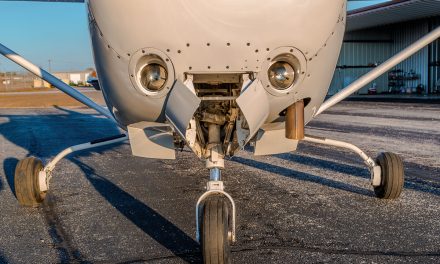A rticle provided courtesy of AOPA – www.aopa.org
rticle provided courtesy of AOPA – www.aopa.org
AOPA is asking the U.S. Supreme Court to hear a case involving aviation products liability, an issue that could have a significant impact on the cost of flying.
At the heart of the case is the question of whether juries can impose aircraft design standards at the state level in aviation products liability cases, in conflict with the FAA’s federal regulatory and certification standards.
“If a product is defective, aggrieved parties should receive compensation for injuries resulting from the defect, but standards set by the FAA, not by juries or the states themselves, should be used to determine whether the manufacturer is liable in aviation products liability cases,” said AOPA General Counsel Ken Mead. “To do otherwise conflicts with the FAA’s areas of responsibility and threatens the affordability and safety of general aviation.”
The case, Sikkelee v. Precision Airmotive Corp., involves a 2005 airplane crash in North Carolina following an engine failure. The pilot was fatally injured, and his spouse filed a lawsuit against the engine’s manufacturer, claiming that the failure was the result of a design defect in the carburetor.
In 2014, a U.S. District Court found that there was no design defect in the carburetor because the engine was certified and approved by the FAA. But in April of this year, the U.S. Court of Appeals for the Third Circuit reversed that decision. It found that the FAA’s federal regulatory role did not preempt state law standards of care in aviation products liability actions. It also found that the FAA’s certification and approval of the engine did not eliminate the possibility of a design defect. That ruling allows juries to hold a manufacturer to state design standards, even if the manufacturer satisfied all FAA regulations and the FAA approved and certified the product.
“This case presents an important question about the states’ role in ensuring continued operational safety of aircraft approved by the FAA,” AOPA wrote in a friend-of-the-court brief submitted to the Supreme Court. “As owners and pilots, AOPA members have a substantial interest in the duties imposed upon manufacturers to address unsafe conditions in FAA-approved designs. These duties significantly affect the safety of existing aircraft and future aircraft produced in accordance with that design. Additionally, the cumulative cost effect of aviation products liability actions on manufacturers is also passed onto aircraft owners. Thus, state-law duties defined in an aviation products liability action affect the cost of purchasing new and maintaining existing aircraft.”
For decades, the FAA has been responsible not only for certifying new designs but also for monitoring, identifying, and addressing any unsafe conditions that may arise after an aircraft has been approved and certified. To ensure continued safety, the FAA may issue airworthiness directives and require manufacturers to make design changes in future production aircraft. It also must approve any and all voluntary changes to the aircraft’s design. In its brief, AOPA wrote that using state design standards in aviation liability actions interferes with these long-standing responsibilities of the FAA.
“It’s vitally important that manufacturers have one set of standards, established by the FAA, to adhere to,” said Mead. “Otherwise they can face the nearly impossible and very costly challenge of trying to follow a hodgepodge of potentially contradictory state standards. That’s bad for safety, it’s bad for manufacturers, and it’s bad for aircraft owners who end up, quite literally, paying the price.”
The General Aviation Manufacturers Association (GAMA) said it, too, planned to file an amicus brief in the case.




